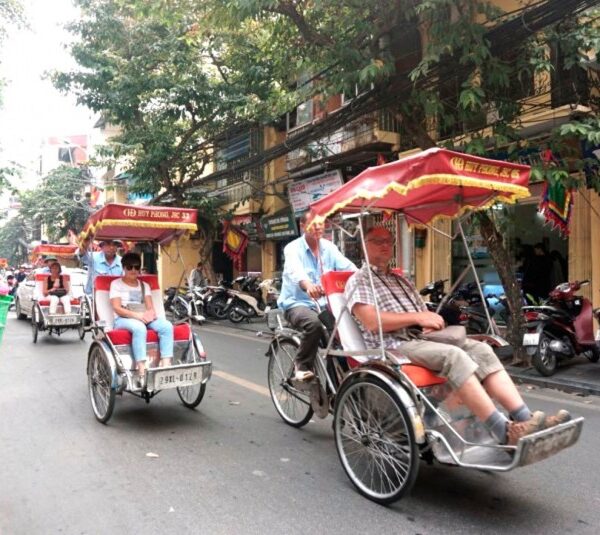Recently updated on October 10th, 2022 at 12:15 pm
History of 36 streets of Hanoi
Referring to the history of Hanoi 36 streets or old streets of Hanoi, perhaps it must go back to the time from the Ly – Tran dynasty when this residential area began to take shape, residents from all over the villages around the Northern Delta gathered and became the busiest area in the capital at that time.

Read more:
Not only that, but this urban area also concentrates a lot of handicraft activities, trading to form the name “Hàng”, the calling to refer to typical craft streets, bearing bold system.
Through many ups and downs of the capital land, that neighborhood still goes along for years, enduring until now; becoming Hanoi’s ancient city in the hearts of many Vietnamese people.
The scale of Hanoi Old Quarter

In terms of area, the official scope of Hanoi Old Quarter is determined as follows: to the north is Hang Dau street; to the west is Phung Hung street; in the south are Hang Bong, Hang Gai, Cau Go, and Hang Thung streets; and the East of Tran Quang Khai and Tran Nhat Duat Street.
Characteristics of Hanoi 36 streets
Name
Hanoi 36 streets, the name has entered the subconscious of many people with the most simple and rustic features from names such as Hang Mam, Hang Non, Hang Duong, and Hang Muoi … representing the main products that small businesses here exchange and trade.
The old town has its own unique features of the city, a crowded prosperous place, always full of people; but still retains the traditional cultural values from ancient times of the period.
Each street concentrates craftsmen from famous craft villages around the old Thang Long citadel, turning each street here into a miniature craft village in the heart of Hanoi.
Architecture
Architecture is another feature that makes the old town unique. The structure of the tube house, the slanted tile roof, and the facade are specialized stores for trading and business, built mainly in the 18th and 19th centuries.
The houses at first glance are small, but the people are arranged very skillfully but reasonably; still fully serving the needs of life of the people here.
Culture
Coming to the old town is to return to the tradition of a thousand years of civilization, with cultural values still preserved in about 100 old architectural works including communal houses, temples, pagodas, and assembly halls.
The most typical example is the Bach Ma temple on Hang Buom street, one of the “Thang Long Tu Tran” * of the ancient Thang Long capital.
*Thang Long Tu Tran: is a concept appearing in folk to refer to four sacred temples holding East – West – South – North directions of Thang Long citadel. The 4 temples are:

Read more:

Read more:


Read more:
Cuisine
Hanoi Old Quarter is beautiful with small roadside stalls. They’re although not luxury restaurants, the taste is strong, holding the travelers’ feet, going, and never forgetting.
Sitting by Sword Lake enjoying the wind, eating Thuy Ta ice cream, watching the flow of people passing by; If you go to the street without enjoying Trang Tien ice cream, it is really flawed.

Old Hanoi with staggering peddlers, weaving through every street with simple but rustic dishes such as donuts, balut; Or simply young sticky rice, the home gifts can win any fastidious diners.
Cuisine in the old town is associated with traditional dishes such as bun cha, pho, fish vermicelli, vermicelli with shrimp paste, bun thang, and “bun oc”, … of small roadside shops, or in old houses.
“Hanoi 36 streets” is not only famous as the most famous place to play in Hanoi but also preserves many historical and cultural values of more than a thousand years of culture.
You must definitely not miss this destination when you visit Hanoi!


One thought on “Learn more about Hanoi 36 streets”